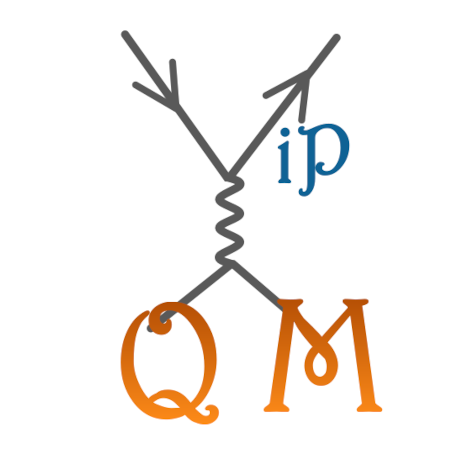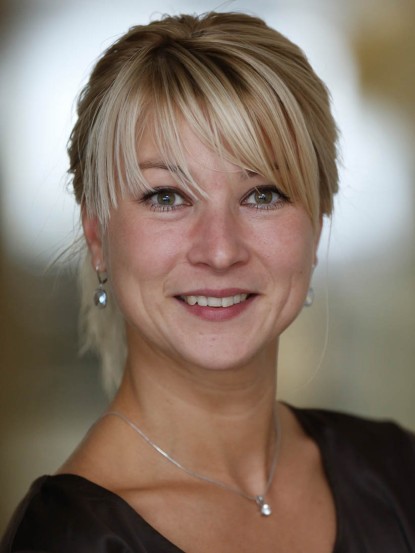Seminare und Kolloquien
Für den Zeitplan der Seminare und der Kolloquien besuchen Sie bitte die entsprechenden Seiten:
- Physikalisches Kolloquium (TU Darmstadt)
- RNM – Workshop (Darmstadt – Heidelberg – Frankfurt)
- EMMI NQM Seminar (GSI, Darmstadt)
Weitere Veranstaltungen
Workshop for young scientists with research interests focused on physics at FAIR – FAIRness 2024
Hotel Medena, Trogir, Croatia
September 23 – 28, 2024
CBM Collaboration Meeting
Technische Universität Darmstadt, Deutschland
23. – 27. Mai 2022
MU Days 2022
GSI, Darmstadt, Germany
20. – 21. Oktober 2022
Workshop for young scientists with research interests focused on physics at FAIR – FAIRness 2022
Mediteranean Village Hotel & Spa, Paralia, Griechenland
23. – 27. Mai 2022
EXPLORING HIGH-MUB MATTER WITH RARE PROBES
ECT*, Strada delle Tabarelle, Villazzano (TN), Italien
11. – 15. Oktober 2021
Workshop for young scientists with research interests focused on physics at FAIR – FAIRness 2019
Grand Hotel Arenzano, Genova, Italien
20. – 24. Mai 2019
International Workshop XLVII on Gross Properties of Nuclei and Nuclear Excitations
From QCD matter to hadrons
Hirschegg, Kleinwalsertal, Österreich
13. – 19. Januar, 2019
EMMI RRTF
Electromagnetic Structure of Strange Baryons
Darmstadt, Deutschland
22. – 25. Oktober 2018
EMMI RRTF
The physics of neutron star mergers at GSI/FAIR
Darmstadt, Deutschland
4. – 15. Juni 2018
Workshop for young scientists with research interests focused on physics at FAIR – FAIRNESS 2017
29. Mai – 2. Juni, 2017, Sitges, Spanien
CBM-STAR joint Workshop
18. März 2017, Darmstadt, Deutschland
Von uns eingeladener Vortrag im physikalischen Kolloquium, TU Darmstadt
9.12.2016 14:00 im Uhrturm-Hörsaal S2|08-171
- Prof. Dr. Nu Xu (Central China Normal University & Lawrence Berkeley Laboratory)
The QCD Medium Properties at Large Baryon Density – Recent Results from Beam Energy Scan at RHIC
Since the discovery of the quark-gluon plasma in high-energy nuclear collisions at the vanishing baryon density (μB ~ 0 MeV), the attention has been shifted to large μB region where rich phase structure is expected. In addition to the first-order phase boundary between the quark-gluon plasma and the hadronic phases, model calculations also speculated the existence of the QCD critical point as well as the quarkyonic matter at large μB. In the first beam energy scan (BES-I) at the Relativistic Heavy-Ion Collider (RHIC), we have collected data from Au+Au collisions at the center of mass energy range from 7.7 GeV to 39 GeV, corresponding to the baryonic chemical potential of 420 MeV to 120 MeV, respectively. These data allow us to study the properties of the QCD medium at the finite baryon density and search for the QCD critical point.
In this talk I will first review what we have learned in RHIC BES-I. Then I will discuss the opportunities in the future bean energy scan program in order to address key questions regarding the QCD phase structure including the illusive critical point. Future fixed-target experiment, the CBM experiment at FAIR, for example will extend the coverage of μB up to 800 MeV. I will discuss the needed physics program and the discovery potential in the next generation experiment.
Von uns eingeladener Vortrag im physikalischen Kolloquium, TU Darmstadt
18.11.2016 14:00 im Uhrturm-Hörsaal S2|08-171
- Prof. Dr. Stefan Schael (RWTH Aachen)
New results from the AMS experiment on the International Space Station
The Alpha Magnetic Spectrometer, AMS, is a general purpose high energy particle physics detector. It was installed on the International Space Station, ISS, on 19 May 2011 to conduct a unique long duration mission of fundamental physics research in space. Knowledge of the precise rigidity dependence of the proton and helium flux is important in understanding the origin, acceleration, and propagation of cosmic rays. Precise measurements of the proton and of the helium flux in primary cosmic rays with rigidities (momentum/charge) up to the TeV scale are presented and the detailed variation with rigidity of the flux spectral indeces will be discussed.
A precision measurement by AMS of the antiproton flux and antiproton‐to-proton ratio in primary cosmic rays in the rigidity range from 1 to 450 GeV is presented. This measurement increases the precision of the previous observations and significantly extends their rigidity range. It shows that the antiproton‐to-proton ratio remains constant above ∼60 GeV.
In addition new measurements of the cosmic ray electron and positron flux will be shown and the perspectives for the AMS physics program till the expected end of the lifetime of the International Space Station in 2024 will be discussed.
Workshop for young scientists with research interests focused on physics at FAIR – FAIRNESS 2016
February 14 – 19, 2016, Garmisch-Partenkirchen, Deutschland
Von uns eingeladener Vortrag im physikalischen Kolloquium, TU Darmstadt
5.2.2016 17:15 im Physik-Hörsaal (S2|14-024)
- PD Dr. Hans Peter Beck (Albert Einstein Center for Fundamental Physics, University of Bern, Switzerland)
Higgs Boson – Year four after its discovery
Three and a half year have passed since the announcement on July 4, 2012, by the ATLAS and CMS experiments at CERN¹s Large Hadron Collider on the discovery of a new Higgs-like particle. Since then the amount of data taken and analysed has grown by a factor of six at ever increasing proton-proton collision energies of 7, 8 and finally 13 TeV. Properties of this newly found boson, such as its mass, spin, parity, and coupling strengths to fermions and bosons have since become accessible in various production modes and decay channels and are being compared with their Standard Model expected values. In this colloquium, I will first give a theoretical overview of the Brout-Englert-Higgs mechanism and how the properties of the Higgs particle can be understood in the Standard Model. I will then explain the tools and methods used to discover and to further analyze the Higgs particle using the ATLAS detector, and will conclude with an outlook of what still remains open to be addressed in the Higgs quest during the coming decades at the LHC.
Hirschegg 2016 – QCD matter: dense and hot
17. – 23. Januar, 2016, Hirschegg, Kleinwalsertal, Österreich
Von uns eingeladener Vortrag im physikalischen Kolloquium, TU Darmstadt
23.10.2015 17:15 im Kernphysik-Hörsaal (S2|14-024)
- Prof. Dr. Ralf Rapp (Department of Physics & Astronomy and Cyclotron Insitute, Texas A&M University, USA)
Spectral Analysis of Primordial QCD Matter
In the first few microseconds after its birth the Universe was filled with an interacting quark-gluon plasma (QGP) ruled by the strong nuclear force (Quantum Chromodynamics = QCD). After ~10 microseconds, at a temperature of ~10^12 Kelvin, the QGP transformed into hadrons, involving the fundamental phenomena of quark confinement and the generation of more than 95% of the visible mass in today's Universe.
We first introduce theoretical concepts and phenomena of the strong force in vacuum, including the notion of quark and gluon condensates. We then discuss the opportunities and challenges in studying strongly interacting matter in the laboratory through high-energy collisions of heavy nuclei. Specifically, we elaborate on three layers of spectral analysis to unravel the properties of the produced QCD medium:
Momentum spectra and yields of light hadrons observed in the final state, signaling local thermalization in an explosively expanding fireball; electromagnetic emission spectra illuminating the problem of mass generation; and the production of heavy quarkonia probing the occurence of deconfinement.
HADES Collaboration Meeting und Mini-Symposium “In Embracement Of Hades”
18. – 20. März 2015, TU Darmstadt, Deutschland
Workshop for young scientists with research interests focused on physics at FAIR – FAIRNESS 2014
22. – 27. September, 2014, Vietri sul Mare, Italien
Quark Matter 2014 – XXIV International Conference on Ultrarelativistic Nucleus-Nucleus Collisions
19. – 24. Mai 2014, Darmstadt, Deutschland
EMMI Rapid Reaction Task Force : “Emissivity of matter under extreme conditions, dileptons and chiral symmetry: established connections and missing links ”
5. – 15. Oktober 2013, Darmstadt, Deutschland
Workshop for young scientists with research interests focused on physics at FAIR – FAIRNESS 2013
15. – 21. September 2013, Berlin, Deutschland
ECT* Workshop: “Electromagnetic Probes of Strongly Interacting Matter: Status and Future of Low-Mass Lepton-Pair Spectroscopy”
20. – 24. Mai 2013, Trento, Italien
HADES Collaboration Meeting und Symposium “Exploring dense matter at SIS18 energies”
19. – 23. November 2012, GSI-Darmstadt, Deutschland
Workshop for young scientists with research interests focused on physics at FAIR – FAIRNESS 2012
3. – 8. September 2012, Hersonissos, Griechenland
HADES analysis workshop 2012
31. Januar – 1. Februar 2012, Darmstadt, Deutschland



